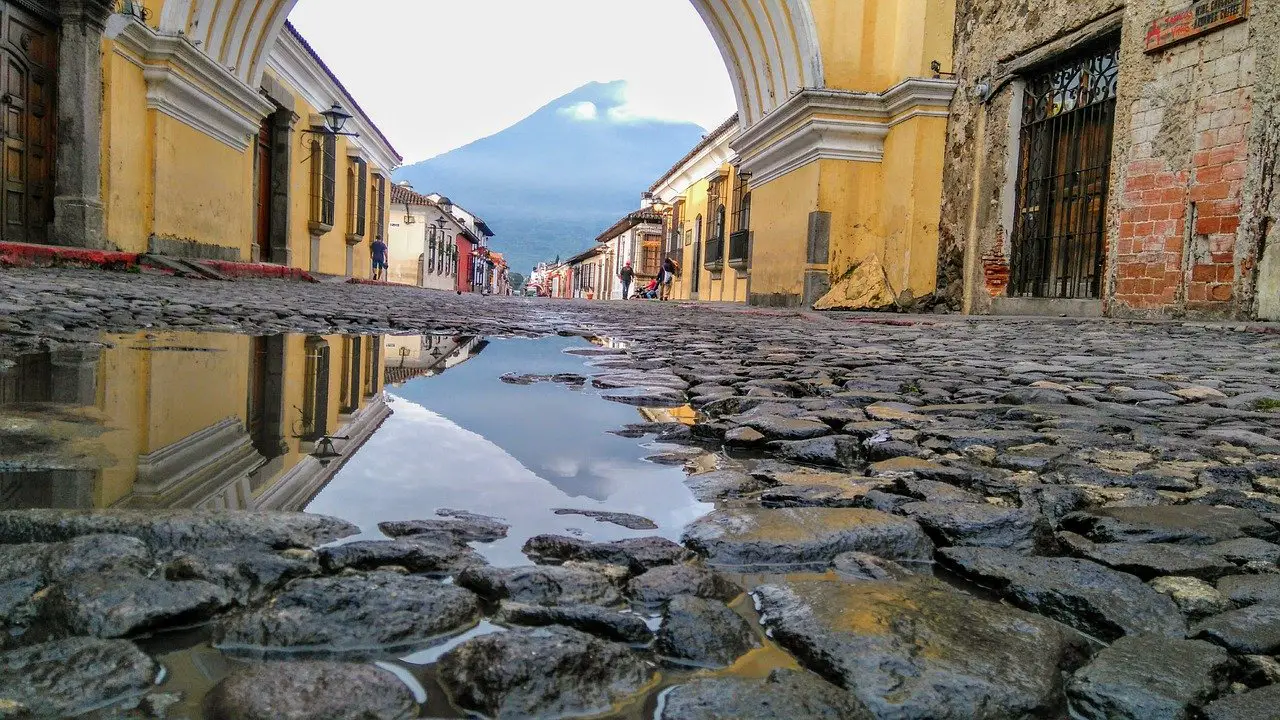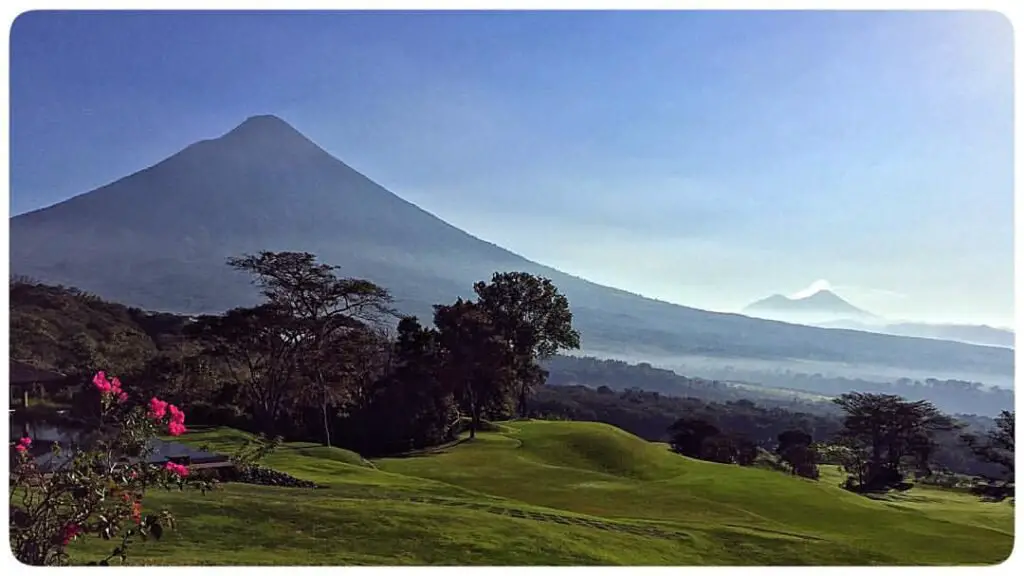Antigua, Guatemala, a city steeped in history, serves as a captivating testament to the vibrant past of this Central American region. Founded in the early 16th century, Antigua was established by Spanish settlers who recognized the area’s strategic and picturesque setting. It quickly rose to prominence as the capital of the Captaincy General of Guatemala, becoming a central hub for trade, culture, and administration throughout the Spanish colonial era. This period marked a significant transformation of the city, with the construction of grand architecture that blended European styles with local traditions.
However, the history of Antigua was not without its challenges. Over the centuries, the city faced numerous earthquakes that devastated its infrastructure. The most notable of these events occurred in 1773, when a series of earthquakes led to extensive destruction and necessitated the relocation of the capital to Guatemala City. This marked a turning point in Antigua’s history, as it entered a period of decline characterized by abandonment and neglect. Yet, even in its derelict state, the beauty of its colonial buildings and the charm of its cobblestone streets remained evident.
As the 20th century approached, renewed interest in Antigua began to flourish. Restoration efforts emerged, aimed at preserving the city’s cultural heritage and architectural splendor. Today, Antigua is recognized as a UNESCO World Heritage Site, drawing visitors from around the globe who are eager to explore its historical significance and serene landscapes. The rich blend of indigenous influences and colonial legacies is palpable within the city, visible not only in its stunning structures but also in the customs and traditions of its people. Visitors can experience firsthand the vibrant local culture, where age-old practices continue to thrive amidst the backdrop of the historic city.
Strolling Through Colonial Streets
Antigua, Guatemala, is renowned for its picturesque cobblestone streets that invite visitors to embark on a leisurely stroll. As you wander through these charming pathways, you will encounter a vibrant palette of colonial architecture, characterized by its stunning hues and intricate facades. The city’s design, which has been carefully preserved since its establishment in the 16th century, serves as a testament to its rich history and cultural significance.
One of the most iconic landmarks in Antigua is the Santa Catalina Arch, a striking structure that connects the former convent of Santa Catalina with the monastery of San José. This arch is not merely a passage; it is an important symbol of the city, standing as a reminder of the colonial era. As you stand beneath its arched gateway, the views of the surrounding volcanoes create a dramatic backdrop, perfect for photographs that capture the essence of this historic city.
Another essential stop is La Merced Church, with its remarkable Baroque architecture and majestic façade. The intricacy of its design is often highlighted by the golden accents and detailed carvings that adorn the exterior. A visit to this church allows you to admire both its architectural grandeur and the spiritual significance it holds within the local community.
For a more relaxed experience, the Central Plaza, also known as Parque Central, offers a serene environment to soak up the ambiance of Antigua. With its vibrant gardens, benches, and a central fountain, this area is perfect for resting and people-watching. To truly immerse yourself in the charm of Antigua, consider exploring the less-known alleys and backstreets where local artisans display their crafts, providing a glimpse into daily life in this enchanting city. Pacing your journey through Antigua’s streets allows you to appreciate the colonial charm nestled in every corner of this historic site.
Volcanoes and Natural Wonders
Antigua, Guatemala, is not only admired for its colonial architecture and rich history but also for its breathtaking natural surroundings, prominently featuring the majestic volcanoes that frame the landscape. Among these geological wonders, three volcanoes stand out: Volcán de Agua, Volcán de Fuego, and Volcán de Acatenango. Each volcano presents unique opportunities for outdoor enthusiasts and adventure seekers alike, providing stunning panoramic views and exhilarating hikes.
Volcán de Agua, known for its symmetrical shape, is a popular choice for hikers. The ascent takes approximately four to five hours, offering various vantage points to witness the surrounding beauty. On a clear day, the summit presents an unparalleled view of Antigua and its surrounding valleys. Conversely, Volcán de Fuego is an active volcano that captivates visitors with its occasional eruptions. Hiking to the base of this volcano provides an exciting experience; however, it is advisable to check for active alerts and possible closures before planning your visit.
For those seeking a more challenging adventure, the hike up Volcán de Acatenango is highly recommended. This trek can take up to six to eight hours, rewarding hikers with a breathtaking view of Fuego’s lava flows at daybreak. To enhance the experience, several local guides offer organized tours that include accommodations and transportation, ensuring safety and an informative adventure. It is crucial to pack adequately for these hikes, bringing essentials like water, snacks, sunscreen, and sturdy footwear.
In addition to hiking, visitors can explore coffee plantations that thrive in the fertile volcanic soil surrounding Antigua. These tours not only showcase the cultivation process but also emphasize the ecological significance of the region’s natural beauty. The ideal time to visit these volcanoes is during the dry season, from November to April, to fully appreciate the stunning vistas without the interference of rain. By immersing themselves in Antigua’s volcanic wonders, visitors can create memorable connections with Guatemala’s unspoiled natural beauty.
Culinary Delights and Local Culture
Antigua, Guatemala, is not only renowned for its stunning colonial architecture and breathtaking volcanic landscapes but also for its vibrant culinary scene and rich cultural heritage. The town offers a unique opportunity for visitors to immerse themselves in the delightful array of traditional Guatemalan dishes that reflect the local ingredients and culinary practices. Street food vendors line the cobblestone streets; they serve up mouthwatering options that entice both residents and tourists alike. A popular street food item is the ‘taco de cerdo,’ which features tortillas filled with succulent pork, complemented by fresh salsa and vegetables.
In addition to street delicacies, Antigua boasts a variety of restaurants that serve authentic Guatemalan cuisine. Traditional dishes such as ‘pepian’—a hearty meat stew—are available at acclaimed establishments like ‘Restaurante La Fonda de la Calle Real.’ This establishment prides itself on using locally sourced ingredients, highlighting the abundant flavors found in the region. Visitors can also find delightful options for those with a sweet tooth, including ‘buñuelos,’ a fried pastry often enjoyed during festive occasions.
Cultural experiences in Antigua abound, especially at the vibrant markets where local artisans showcase their creations. The bustling ‘Mercado de Artesanías’ is an excellent place to purchase handmade crafts and textiles while enjoying traditional snacks. Additionally, Antigua hosts various cultural events throughout the year, including the famed Semana Santa (Holy Week) celebrations, where visitors can witness elaborate processions and intricately decorated alfombras (carpets). For those interested in delving deeper into local gastronomy, cooking classes are readily available, offering participants the chance to learn traditional cooking techniques and recipes. Engaging with these culinary delights and cultural endeavors allows visitors to truly appreciate the charm of Antigua and its enduring legacy.









